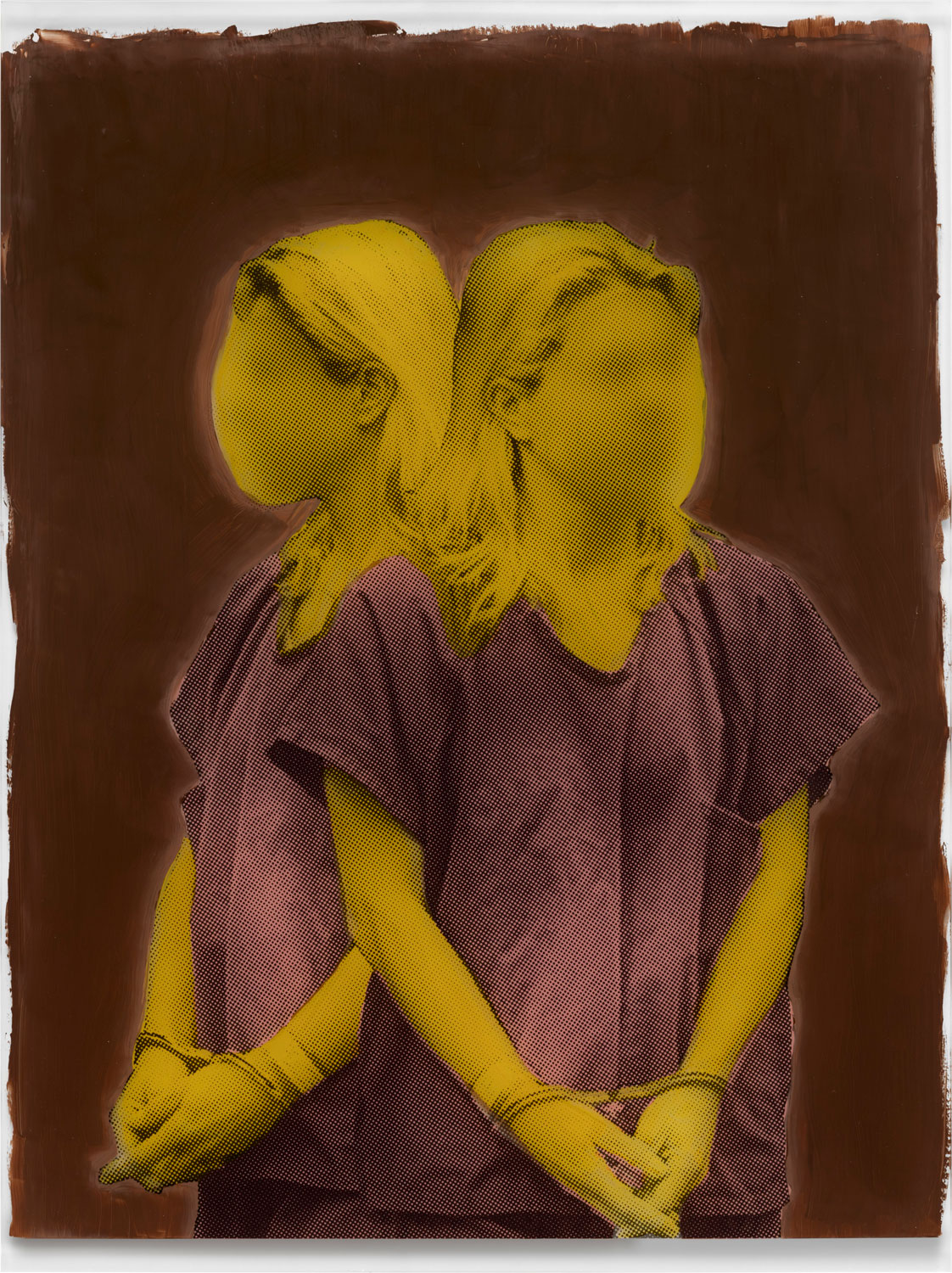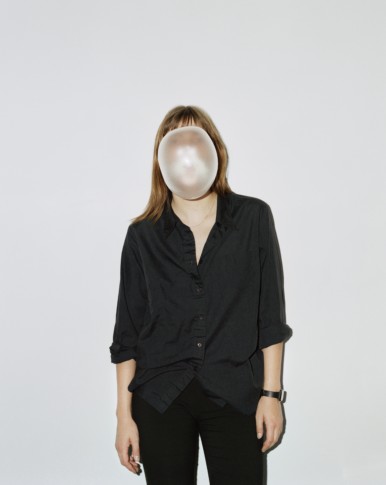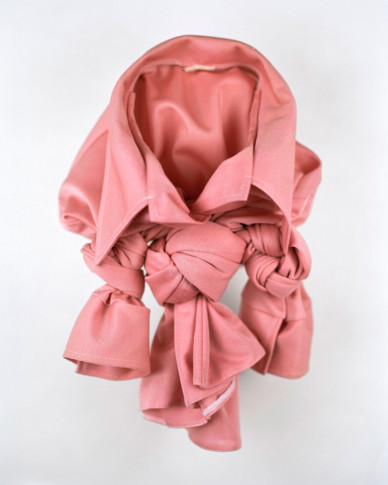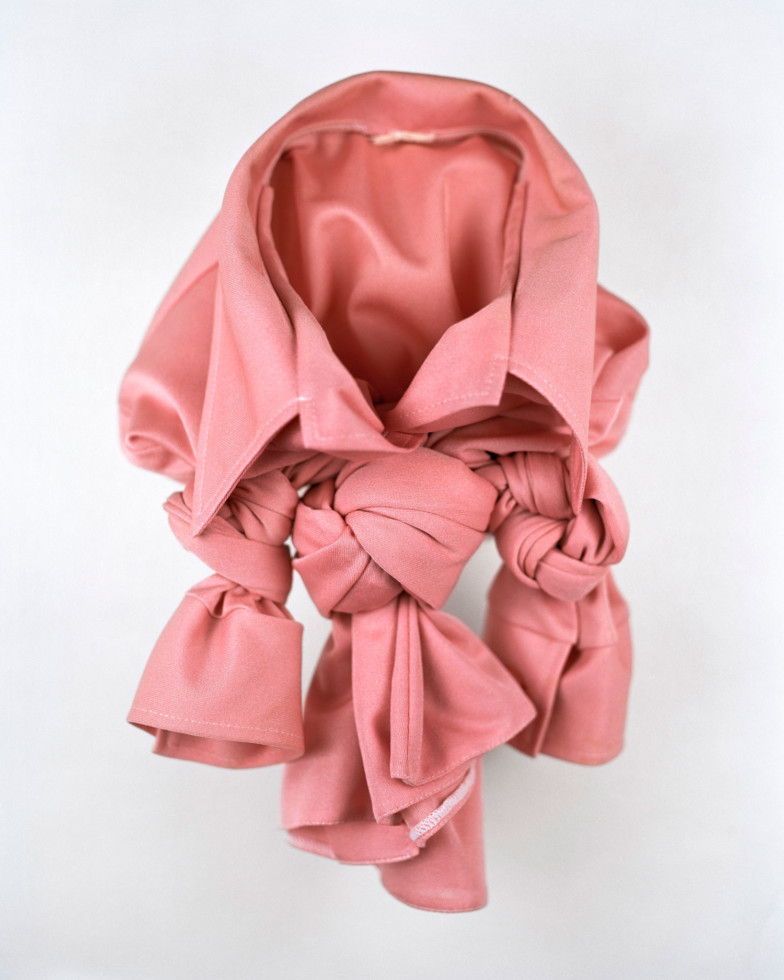
Annika Elisabeth von Hausswolff, Untitled (Shirt #35), 2002/2021 © Annika Elisabeth von Hausswolff
About the artist
Breakthrough
Annika Elisabeth von Hausswolff studied at Konstfack, the University College of Arts, Crafts and Design in Stockholm. The series “Back to Nature” (1993), which was presented in a student show with the theme “A View of Nature,” was a breakthrough for von Hausswolff. In her childhood home, she was fascinated by a crime review, Nordisk Kriminalkrönika, with detailed pictures of crime scenes. The purpose of crime scene photography is to provide a dispassionate record rather than to arouse emotions. The viewer turns up too late, after an irrevocable act has already taken place.
In the series, the camera lens records women who seem to have been dumped in nature after an assault. The melding of different image genres, such as police investigations and nature romanticism, is a recurring approach in von Hausswolff’s practice. The viewer is confused about whether the picture is authentic and how it should be perceived. No male perpetrators or figures of authority are visible, but there is an implicit critique of the convention that links masculinity to the superiority of culture and femininity to its opposite, the inferiority of nature. If no one removes her body, the woman will soon return to nature.
Body and gaze
Annika Elisabeth von Hausswolff was early to embrace a postmodern, feminist awareness of how images can reinforce gender roles. The camera was starting to be seen as an extension of the prevailing active male gaze at women as passive objects. Several of von Hausswolff’s works from the 1990s and onwards address this topic, undermining the male gaze. “Untitled (A Study in Politics)” (1993) is based on authentic photo¬graphs borrowed from the National Board of Forensic Medicine in Solna. These images of battered women had been cut into ovals resembling the shape of family portraits. The artist later withdrew the pictures.
Now, twenty-nine years later, she has revived the work in a new version based on the old negatives. Being both in front of and behind the camera is another way of taking control. In “Alone with Bubble” (1996), von Hausswolff is the only person in the studio, and her face is partially hidden by a giant bubblegum bubble. The artist often use herself as a model in her staged photographs, though one cannot always tell from the title.
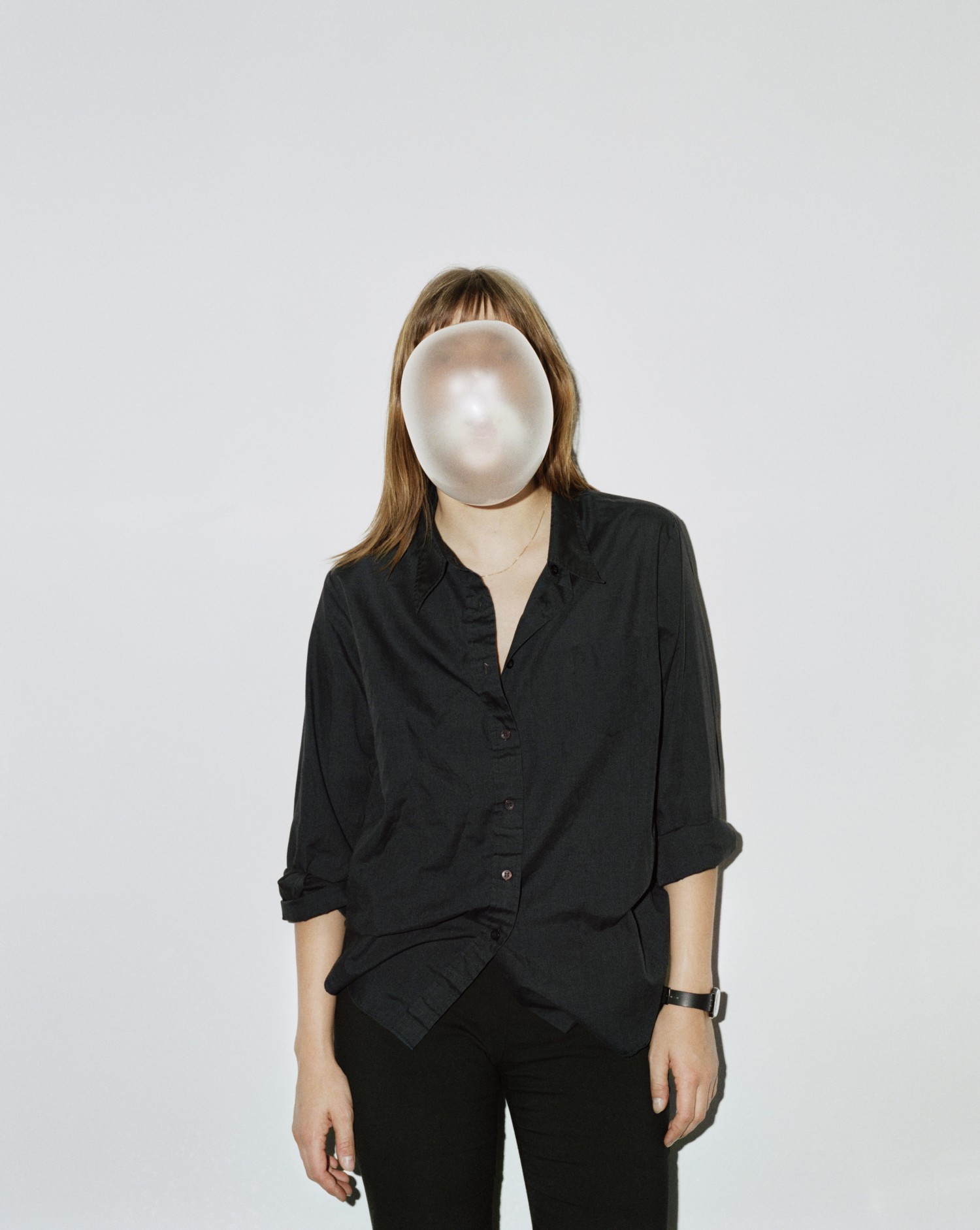
Venice
In 1999, Annika Elisabeth von Hausswolff represented Sweden at the Venice Biennale with a series of new, large-scale, glossy color photographs that looked like they had been made specifically for the bright, modernist Nordic Pavilion. But this was not the case. Although the composition of the photographs is as distinctive as the architecture itself, the motifs are obscure, dreamlike, full of desires. The surface contrasts with the unglamorous settings of the scenes.
In the works shown in Venice, von Hausswolff solidified and further developed her ideas. Among them were some new, evocative images, some dealing with psychoanalytical themes, including “Everything Is Connected, Ha, Ha, Ha” (1999), based on a childhood memory of her mother’s nylon tights soaking in the sink. Humor became a regular feature. Traits from surrealist photography were also noticeable; von Hausswolff had been among those who were influenced by the German photographer Hans Bellmer and his photographs from the 1930s of headless dolls in sexual situations and other surrealist motifs.
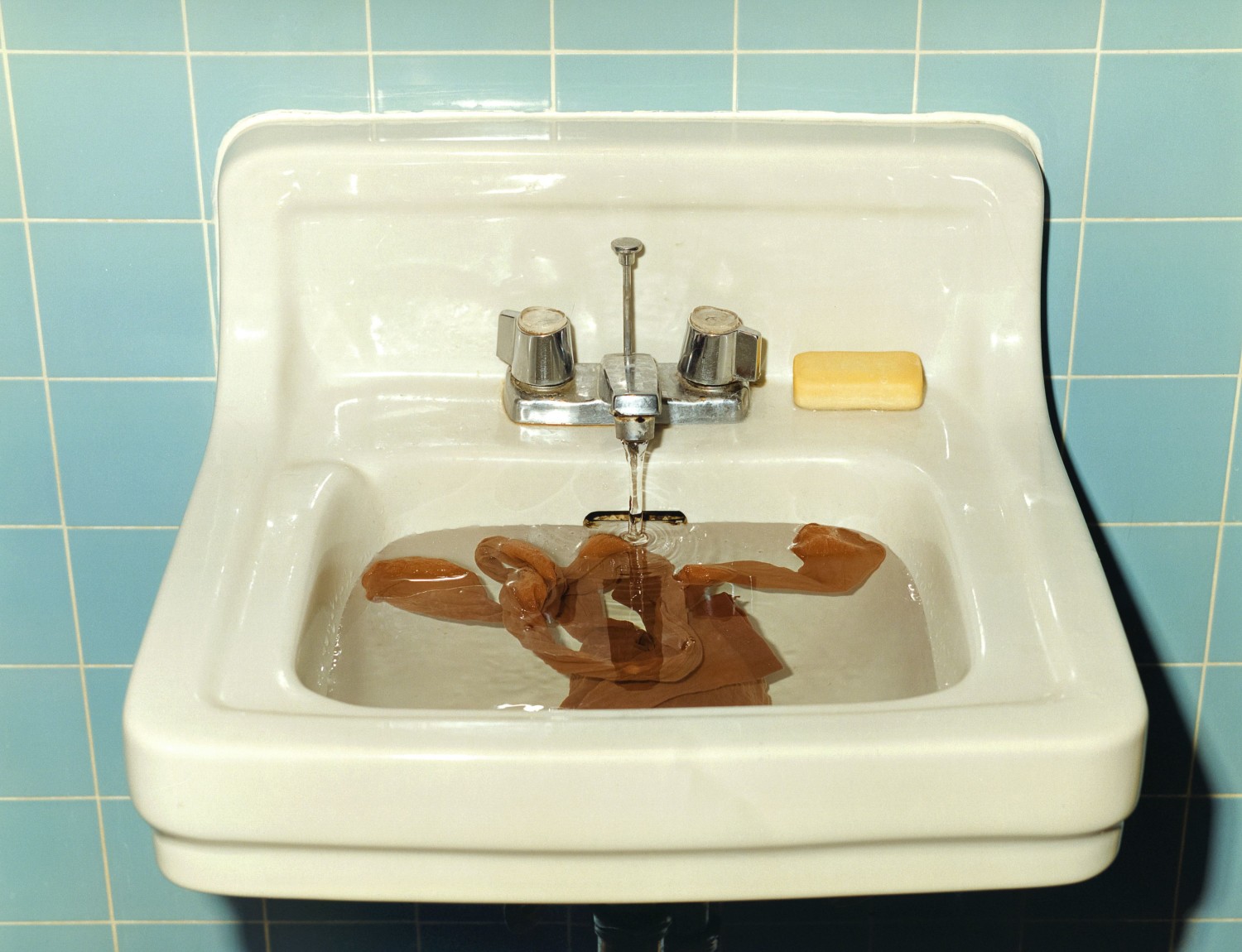
Life and memory
Many of von Hausswolff’s works are directly linked to her life and memories. Ghost (2000) stems from a specific situation. The installation shows the artist’s childhood home. Her parents were moving out, the apartment had been emptied, and this was her last chance to take pictures of the rooms. The subject is the mood rath¬er than the rooms as such. This atmosphere could be described with the Freudian term unheimliche—when something familiar and ordinary feels uncanny and eerie. The personal connection becomes universal.
The objects in the images are props she has used in other works. A pair of men’s shoes or a forgotten bra on a hanger become charged with symbolism as representations for father and mother figures. I Am the Runway of Your Thoughts (2008) is a series of twenty-five photographs that are associated in some way with a landing strip. A woman is shown interacting with a model airplane near her face and her open mouth.
Objects
When von Hausswolff came to Stockholm in the early 1990s, she studied photography at Konstfack, the University College of Arts, Crafts and Design. She became part of a context in which teaching took a more theoretical and philosophical turn in the wake of postmodernism. Students experimented with sculpture, textiles, and installations in a process through which photography could leave the wall and step into the room. The school’s previous division into photography, sculpture, and painting was dissolved and later replaced with an interdisciplinary school of fine arts.
The exhibition includes a few physical objects and installations. Some of the objects and materials—a chair, a curtain and some red blinds—occur in earlier photographs. The Moderna Museet collection includes “Esoteric Forensic” (2007), one of five “cabinets.” The title suggests forensic examinations, but also that which remains hidden, as well as mystical practices. The cabinet is locked, and a curtain inside the glass door hides the content.
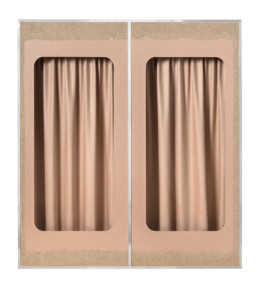
A shift
In 2008, the American company Polaroid ceased making analogue instant film. The Polaroid camera had been an essential tool for von Hausswolff’s experiments with ideas, colors, shapes, and lighting in her staged images. This prompted her to redirect her practice partly towards documentary photography. She embarked on a collaboration with the historian Jan Jörnmark, resulting in the book “Avgrunden” (The Abyss, 2011). The book explores the economic crisis in the IT industry and the breakdown of the housing market in the United States and other countries, and the impact these had on the geographical landscape.
The artist created several works based on photographs she took with a digital camera. Untitled (For Sale by Owner) (2011) shows abandoned homes in Detroit, the remains of a community ravaged by closed automo¬bile industries and lost jobs. In a similar way, von Hausswolff also assembled images of deserted schools, courthouses, and nightclubs. This provided the opportunity to reconnect with the documentary tradition and more classic photography she loves and on which she has been so dependent.
Elegy
The death of analogue technology and having to work outside the darkroom took von Hausswolff’s practice in new directions. The transition was processed as bereavement in several works. One series documents some of the tools used for developing photographs: filters, lenses, and negative holders. The tools themselves were also displayed, as in the work “Crop Memory Machine” (2013), which is composed of so-called easel masks presented under glass hoods.
The images express a nostalgic lament over the loss of analogue technology and the mystique surrounding the chemicals and lighting first used to capture pictures on paper. Now, the artist embarked on a more systematic processing of images from her rich archive of newspaper clippings, advertisements, films, and her own works. One series of works consists of images scanned and transferred to enamel in pale greens, reds, and blush tones.
Alternative secrecy
The series “The Hole Is a Noun” (2020), added by the artist for the exhibition in Malmö, contains pictures of holes. The motifs were also used in the work “Excerpt from Alternative Secrecy” (2021) created for the lobby at the museum in Stockholm. After 2008, when von Hausswolff began collecting images from the Internet more systematically, “holes” emerged as a theme. The associations are manifold: a hole can be a wound, a well, or a grave. The artist was also inspired by the punk rock song “Har vi inte grävt för många hål?” (Haven’t We Dug Too Many Holes?) (1985) with lyrics and music by Stry Terrarie. Punk was a starting point for von Hausswolff’s practice as an artist, and in the 1980s she was a singer in the band Cortex.
The Body of the Anthropocene (2020) is a gigantic photograph of a tousled teddy bear. The psychoanalyst Donald Winnicott coined the term transitional object for things that are invested with comfort and security and form a vital phase in the psychological development of toddlers. Similar associations to passages between different states or phases in life are found in the drapes, windows, and doors in von Hausswolff’s works. The title refers to the concept of the anthropocene, a geological era characterized by the human impact on the earth since the dawn of the Industrial Age.
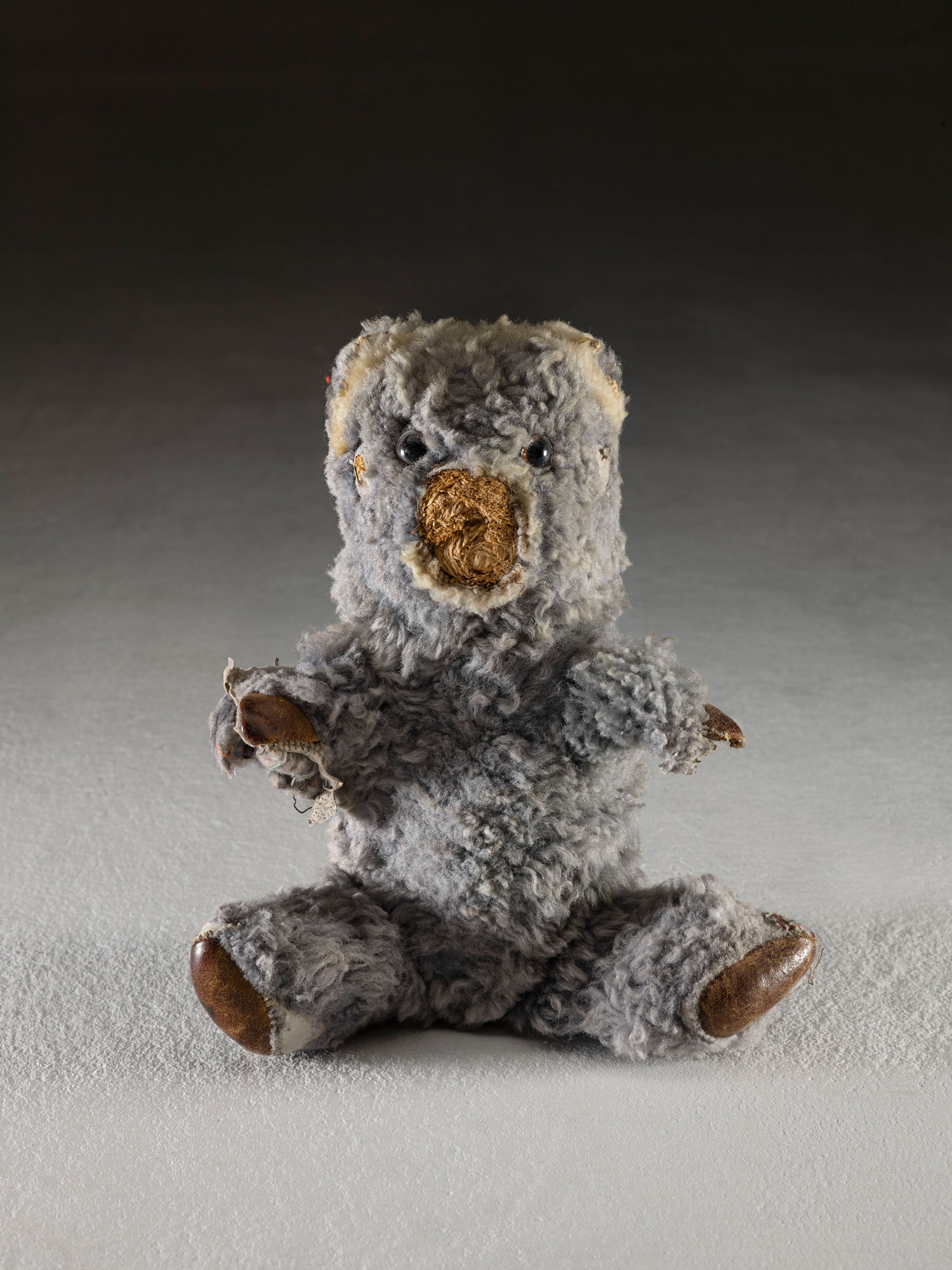
Full circle
A radio broadcast during the Covid-19 pandemic relates how children whose mothers are in prison have not been able to visit them in the same way as before the virus outbreak. Although they were upset, some were also relieved, a slightly forbidden feeling. The person who is expected to provide safety and stability has not delivered. Instead of giving comfort, a mother might have committed serious crimes.
The series “Oh Mother, What Have You Done” (2019–20) is based on documentary photographs collected by von Hausswolff over many years. Unlike her pictures from the 1990s of female victims in nature, these are not staged. The victim seems to have changed places with the perpetrator. The women are in prison. To protect their identities, they are shown from behind or have been made anonymous in other ways. The images were created by scanning, dithering, and transferring documentary photographs onto plexiglass with UV ink. The artist then applied oil paint to the reverse side, transforming them into unique objects.
